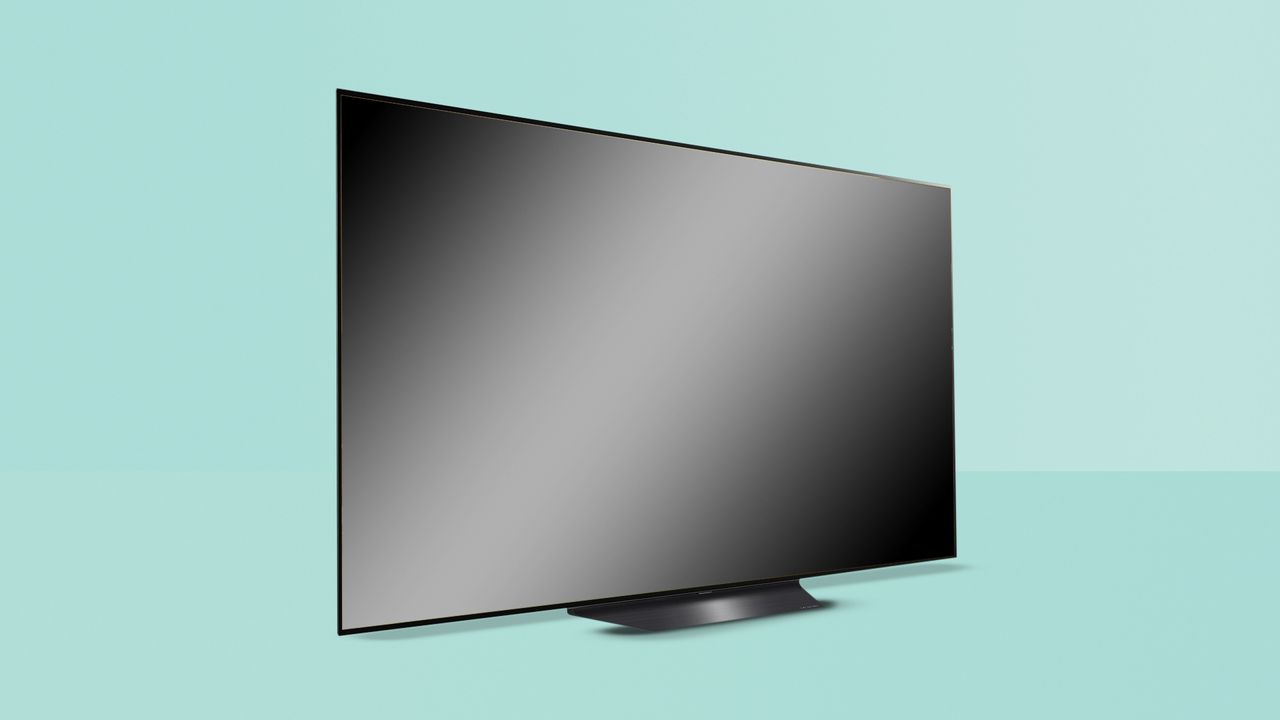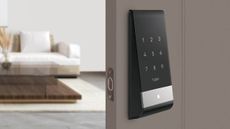LG B9 review (OLED65B9): a stunning, cheap OLED TV
The LG B9 is a phenomenal OLED TV bargain, packing rich images with future-proofed smart TV and gaming features

The LG B9 is a fantastic TV that makes big-screen OLED technology available at a lower price than we’ve ever seen before, though LG's C9 remains the sweet spot in its current OLED range overall.
-
+
Outstanding, contrast-rich picture quality
-
+
Great smart TV system
-
+
Beautiful, ultra-thin design
-
+
OLED tech at an LCD price
-
-
Not as bright for HDR as LCDs
-
-
The screen’s quite reflective
-
-
Theoretically susceptible to image retention
-
-
No HDR10+ support
Why you can trust T3

Welcome to T3's LG B9 review. The B9 wears its main attraction on its price tag: it's one of the cheapest OLED TVs in town, especially if you look at the 65-inch version, which is what we tested for this review (officially known as the LG OLED65B9) – but you wouldn't know that, from its proud place in our list of the best TVs.
The LG B9 also comes in a 55-inch version (the OLED55B9), which is very nearly the cheapest OLED you can buy, though it tends to be pipped to that post by the Philips OLED754 – but there's barely anything in it, and the Philips isn't available in the US, so the B9 has the field to itself there.
• Read our Philips OLED754 review
Not surprisingly, this eye-catching, wallet-friendly price does come with one or two strings attached. Including, most significantly, a step down from the outstanding video processor that helped make the LG C9 so awesome. Fortunately, though, this doesn’t stop the B9 from still being a fantastic TV for its money, and definitely one of the best OLED TVs available today.
• Read our LG C9 review
LG B9 review: price and Features
The LG B9’s OLED screen technology and its utterly affordable price are its two biggest attractions. They are, after all, two things which historically you would never find together.
The 55-inch version tends to be around £1,099/$1,399, while the 65-inch can be found for below £1,599/$1,899 – these beat almost all other OLEDs on the market.
After all, while LCD TVs can operate at all sorts of performance levels and price points, OLED is – or has been… – exclusively a premium TV technology. Making every pixel produce its own light as OLED screens do just doesn’t come easy, from either a technological or manufacturing stand point. And if something isn’t easy, it also isn’t cheap.
While the £1,599/$1,899 price attached to the OLED65B9 we reviewed may still be pretty high compared with the mainstream LCD market, though, it looks like great value for a 65-inch OLED. Especially when experience suggests that despite being LG’s latest entry-level OLED TV, the OLED65B9 should still deliver some serious picture quality.
The B9s are the only OLED models in LG’s current range that use an Alpha 7 chipset rather than the newer-generation Alpha 9. As we’ll see later, this does require you to swallow a few picture compromises. It’s still actually a pretty impressive processor overall, though.
As with almost every large-screen TV we see these days, the B9 carries a native 4K resolution. It also supports high dynamic range sources in the baseline HDR10, premium Dolby Vision and live broadcast-friendly HLG formats. There’s no support, though for the Dolby Vision alternative HDR10+ format, which is used on Amazon Prime Video and some 4K Blu-rays.
Connections are seriously impressive for such an affordable TV. In particular, all four of its HDMIs are apparently built to the latest, full-bandwidth HDMI 2.1 standard. This means they can handle the 4K 120 frames per second games that the PlayStation 5 and Xbox Series X promise to support. Precious few other TVs (including high-end ones) right now carry any HDMI 2.1 ports, never mind four.
This isn’t the only feature of the OLED65B9 that will appeal to gamers, either. It also supports variable refresh rates and Nvidia's G-Sync system for smoother game performance overall, automatic game mode switching (which activates the screen’s low-latency mode when a game source is detected), and a fantastically low input lag of just 14ms when Game mode is active.
There’s also a system that can detect and slightly dim down static elements of gaming graphics, to reduce their potential for causing image retention on the OLED panel.
LG B9 review: picture performance
There are two ways of looking at the B9’s picture performance. You can compare it with that of LG’s step-up C9 models, in which case it predictably comes up a tad short. Or you can compare it with other 4K TVs in its price range, in which case it’s hugely impressive.
Let’s do the bad news first by looking at where the OLED65B9 falls short of its more expensive C9 siblings.
First, the B9 loses some subtle detail in very dark areas versus the C9 models. This means its dark scenes don’t feel as consistently full of depth and three-dimensionality as its bright scenes. The Cinema preset improves the B9’s shadow detailing, but only at the cost of more brightness than is really ideal.
The B9’s pictures also look a little less sharp, especially when you’re watching HD upscaled to 4K. This is a particularly clear example of the where the Alpha 9 processor in the C9 scores over the Alpha 7 chipset in the B9.
Colours, too, lack some of the finesse, consistency and balance you get with the C9, giving pictures a slightly coarser, less refined overall look. The reduction in colour subtlety is particularly noticeable in skin tones, which can sometimes look too smooth and mannequin-like.
There’s also a mild magenta undertone to some shots on the B9 that you don’t get with the C9.
Shots that contain a lot of tracking and panning and/or lots of motion within the frame, meanwhile, look a little less stable and convincing on the OLED65B9. Without using its motion processing system, there’s a touch more inconsistency to the judder you get with 24 frame a second films. And with the motion processing switched on, the B9 produces more unwanted processing side effects.
Maybe the single biggest reason to think about finding a few hundred pounds more for the C9, though, is how much brighter it looks with high dynamic range sources. The most extremely bright parts of HDR pictures look a bit less intense on the B9, and full-screen bright HDR scenes look significantly duller.
Measuring the OLED65B9’s brightness quickly backs up this subjective impression. Its light output when showing a white HDR square that occupies 10% of the screen area peaks at around 650 nits. Whereas the C9 manages to peak at nearly 850 nits. That’s enough to make a major difference given how much extra light range HDR content can deliver.
That said, the B9’s so-called tone mapping (the way it adapts ultra-bright HDR content to its own screen capabilities) is good enough to stop HDR peaks looking overly bleached of detail. In fact, LG adapts HDR content to the OLED65B9’s screen capabilities extremely well overall. But always within the limits of its restricted brightness.
There are a couple of areas, surprisingly, where the OLED65B9 actually performs a little better than the C9s. Black levels, for instance drop a bit deeper. Though as we’ve seen, this does come at the cost of some shadow detail when using the TV’s most enjoyable picture settings.
Second, the OLED65B9 is less prone to revealing compression blocking noise when watching some streamed sources than the C9. Though since this is likely a side effect of its reduced shadow detailing, it’s more of a silver lining to a cloud than an simple win-win.
At this point, though, it’s high time we looked at the OLED65B9 in relation to other TVs in its price point. Which are pretty much all (bar the OLED65B9’s own 55-inch sister) LCD models. And here the OLED65B9 becomes very compelling indeed.
Its black levels, for instance, are in a whole different league to almost all of the LCD competition. It also delivers dark scenes with more backlight consistency than any LCD can muster, by which I mean there’s no clouding in dark scenes, and no extraneous light around bright objects that appear against dark backdrops.
Colours look gorgeously rich thanks to having such a consistently deep black level foundation to work against, despite the B9’s OLED panel not being able to inject its colour with as much brightness as some high-end LCD TVs can.
While the OLED65B9 can’t punch out as much measurable brightness as the sort of premium LCDs you can get for the price, the way OLED enables the darkest pixel in a picture to sit right alongside the brightest without any cross pollution creates a sense of local contrast intensity that similarly priced LCDs struggle to match.
The OLED65B9 also delivers much wider realistic viewing angles than you can get with LCD TVs.
However, we should address the lack of brightness more, because that and a rather reflective screen might well make a high-end LCD set a better option for a bright living room, especially if you watch during the day. The Samsung Q80R costs a little less than the equivalent 55-inch or 65-inch B9, for example, but offers nearly double the brightness, which will make a huge different in bright environments. It also handles its dark scenes really well, though still not as strongly as the B9, of course.
For movie fans fond of lights-down film nights, being able to get a TV such as the B9 for this price is a serious result.
LG B9 review: Sound
LG’s really stepped up its audio game with its 9 series OLED TVs. Especially if you swap the default Dolby Atmos sound setting for LG’s AI Sound mode.
This might appear counterintuitive given how great Dolby Atmos usually sounds. The truth is, though, that the AI Sound mode has been designed by LG’s engineers to perfectly match sound playback to the capabilities of the TV’s speakers, while the Dolby Atmos mode is more interested in trying to optimise the format’s ‘object-based’ sound approach, where sound effects are painted into a three-dimensional sense of space.
The result is that while the Dolby Atmos mode delivers a more precise soundstage, it also lacks impact and raw power, failing to burst into life with action scenes.
The AI Sound mode, on the other hand, creates a much louder, more aggressive, more forward firing sound, with more dynamic range and impact. Occasionally it pushes slightly beyond the speakers’ capabilities, causing minor distortion. Overall, though, the AI Sound mode provides a very impressive audio performance for a TV with bodywork as slinky as that of the B9.
Higher-end TVs do offer better audio quality (including the C9), but most TVs in this price range are improved with one of the best soundbars anyway – that's our recommendation.
LG B9 review: Design and Usability
The LG B9 leaves similarly priced TV rivals for dead with its design, chiefly thanks to the incredible thinness of its panel.
Since OLED technology doesn’t need any external backlighting, the OLED ‘film’ can be mounted directly onto a rigid backsheet. Which means the screen is just millimetres deep at its outer edges, seemingly defying the laws of physics. This effect is even more pronounced for the OLED65B9 65-inch model, since it's the same thickness as the 55-inch model but with a bigger panel.
The brushed metal finish of the back panel is also gorgeous and alarmingly stroke-able, while the desktop stand continues the brushed metal finish to create a truly opulent design.
Around a third of the rear side sticks out quite a bit more than the rest. But all the processing chips, tuners, speakers and so on have to go somewhere. And from most angles, the B9’s svelte gorgeousness remains unspoiled.
As with all LG TVs, the OLED65B9 is made exceptionally easy to use by its webOS smart platform. This uses attractive, clear, economical menus overlaid over the bottom of the picture to give you quick, slick and easy access to all the TV’s many online, tuner, and input sources.
It’s easy to customise the content icons to prioritise those you use most - or you can have the TV do it automatically based on how frequently you use each source.
The app support is very generous, too. All of the ‘heroes’ are covered, from Apple TV, Disney+, Amazon Prime Video and Netflix through to all of the UK’s key broadcaster catch up services.
The so-called ‘magic’ remote LG provides with the OLED65B9 continues the ease of use theme by, uniquely, letting you just point it at an option you want to select. Plus there’s a spinning wheel knob to aid fast movement up and down menus.
Rounding out the OLED65B9’s friendliness is compatibility with the LG ThinQ AI, Amazon Alexa and Google Assistant voice recognition systems. These are all built in to the TV, too; you don’t need any external listening devices.
LG B9 review: verdict
If you’re looking for a very bright picture to combat a bright room, then an equivalent premium LCD model such as the Samsung Q80R might serve you better – that particular model will even save you enough for a soundbar. Alternatively, if you can afford the extra cash needed for the LG C9, the step up model is just about worth it thanks to its all-round superior picture quality.
But if you want the home cinema-friendly OLED screen attributes for the minimum price, but without sacrificing connectivity and smart features to get there, this the ideal TV pick. The LG B9 is music to the ears (eyes?) of AV fans who’ve previously found the joys of big-screen OLED hovering tantalisingly beyond their financial reach.
Sign up to the T3 newsletter for smarter living straight to your inbox
Get all the latest news, reviews, deals and buying guides on gorgeous tech, home and active products from the T3 experts
John Archer has been testing TVs and AV gear for over 25 years, having worked on Home Cinema Choice magazine. He's a contributor to Forbes, TechRadar, Trusted Reviews, Wired and many more places – if you've owned a TV in the last couple of decades, John's probably reviewed it somewhere. He's seen so many hot new technologies come and go, like tears in the rain.
-
 This Tapo smart lock scans your palms’ veins for hands-free unlocking
This Tapo smart lock scans your palms’ veins for hands-free unlockingTapo announces new smart lock – but details are unclear
By Bethan Girdler-Maslen Published
-
 New Apple Watch accessory gives users a taste of luxury
New Apple Watch accessory gives users a taste of luxuryThis is the best treat you can give your Apple Watch
By Sam Cross Published
-
 Stubble & Co introduces new canvas collection for those seeking style and durability
Stubble & Co introduces new canvas collection for those seeking style and durabilityThere are three bags to choose from
By Lizzie Wilmot Published